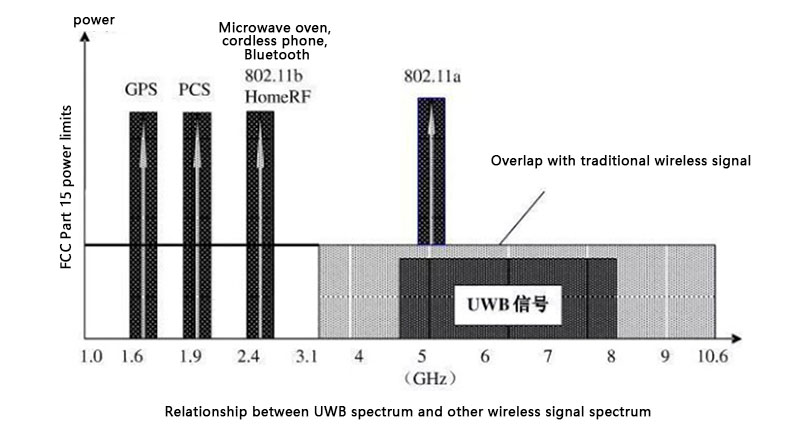Ultra wide band (UWB) is a new type of wireless communication technology. According to the specifications of the Federal Communications Commission of the United States, the working frequency band of UWB is 3.1-10.6ghz, the ratio of the system - 10dB bandwidth to the system center frequency is more than 20%, or the system bandwidth is at least 500MHz. The generation of UWB signal can be realized by a narrow pulse (such as a second Gaussian pulse) with a very short transmission time (such as 2ns), which can be modulated to the working band of UWB by up conversion methods such as differential or mixing. What are the advantages and applications of UWB?

UWB advantages:
( 1) The transmission speed is fast and the system capacity is large. According to the channel tolerance formula, the maximum transmission rate is proportional to the system bandwidth. The bandwidth of UWB communication is more than 500MHz, and its transmission rate is more than 1Gbps. Because of the narrow band, the traditional wireless carrier communication system must adopt the method of M-ary modulation in order to achieve the transmission rate above 100Mbps, which puts forward a high requirement for the signal-to-noise ratio and increases the complexity of the system construction.
( 2) The transmitting power is low. Ultra wideband (UWB) radio has more than 1GHz RF bandwidth, and the average power required for transmission is very low. Especially in the application of short distance communication, the transmitting power of UWB transmitter is generally less than 1MW; Lower transmission power can extend the working time of the system, and the electromagnetic radiation to human body will be very small.
( 3) High multipath resolution. UWB signal adopts short duration narrow pulse, which has strong temporal and spatial resolution. The system has high multipath resolution, so the whole system can make full use of the energy of transmitted signal. In addition, UWB signal has good anti multipath performance, and is not sensitive to channel multipath fading. The receiver can obtain strong anti fading ability through classification. It can obtain good positioning effect in indoor or building intensive occasions, and achieve higher accuracy in ranging, positioning and tracking.
( 4) The system has good confidentiality. The transmission power of UWB is low, and the signal can be well hidden in other types of signals and environmental noise. The traditional receiver can not recognize and receive, so it must use the same spread spectrum code pulse sequence as the transmitter to demodulate. The system has strong system security.
( 5) Strong penetration. Narrow pulse has a strong penetration ability, which can help police search for escaped criminals in the partition wall and rescue people trapped in buildings.
( 6) High positioning accuracy. UWB signal has the characteristics of ultra wideband and high spatial resolution, which makes the range resolution accuracy of UWB system thousands of times higher than other systems. The range resolution of UWB signal can reach centimeter level, which is unmatched by other narrowband systems. UWB technology has developed a wireless channel with large capacity, which is insensitive to channel fading, low power spectrum of transmitted signal, high ranging accuracy, low system cost and so on.
Taking advantage of these advantages, UWB signal has good penetration and accurate ranging characteristics to obstacles, and can design UWB pulse wireless positioning system with strong communication function and positioning function, which is widely used in smart power, intelligent chemical plant, judicial prison, construction management and control, rail transit, airport security inspection, military training and other fields.
If you have any questions, please contact us by the following ways